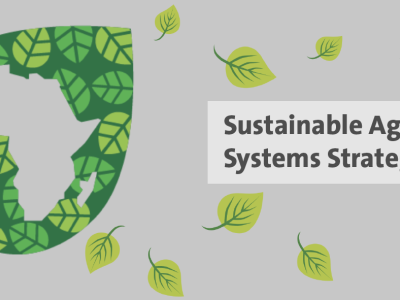
Virtuous emulsification of business and nutrition
The title ‘Virtuous Emulsification of Business and Nutrition’ signals the need for emulsification of business and nutrition: they can’t be treated as oil and water indefinitely. We need more emulsifiers.
The UN Decade of Action on Nutrition invites us to be optimistic that stakeholders will come together to end malnutrition by 2030: The April 2016 proclamation of the United Nations Decade of Action on Nutrition (2016–2025) provides a unique opportunity for stakeholders to strengthen joint efforts towards eradicating hunger and preventing all forms of malnutrition worldwide.
After all, while there are many development problems that seem intractable, malnutrition is not one of them. For many forms of malnutrition we know what to do, and even how to do it: what we need to increase is the resolve, courage and grit needed to intensify action. The breadth and intensity of action to accelerate nutrition improvement will be the measure of success for the Decade.
I am less optimistic about the Decade of Action’s ability to galvanise the private sector. While government resources and overseas development aid are vital for development, business resources will become ever more important in the Sustainable Development Goal era. This is especially true for diets because more and more people buy food from markets. Out of about 40 countries that the World Bank Living Standards Measurement Survey team has worked on, only one, Mozambique, has more than 50% of households getting food from their own consumption. In all the others, food from market purchases was the predominant source. And what do markets mean? Businesses.
What business has business in nutrition?
Businesses are already shaping food supply and demand. The question is: how can they shape these dimensions for better nutrition? Not enough of us are posing this question, let alone answering it. Why is that? Because the topic is highly controversial. We are paralysed by a fear of engagement. Concerns over reputational risk, the fear of doing damage, and sheer distrust are holding us back. These fears and concerns are fed by a lack of evidence on when, how and why to engage, a lack of transparency in engagement and a weak accountability infrastructure.
In order to occupy the substantial middle ground between thinking ‘business is the answer’ and ‘business has no business in nutrition’, we need a much more enabling environment. Accountability can be strengthened by the collection and public sharing of data on which businesses are behaving responsibly with respect to compliance with codes such as the marketing of breast milk substitutes; by tracing product formulation; and by tracking transparency of operations. Many stakeholders in certain contexts have conflicts of interest that need to be declared when it comes to actions that affect nutrition status. For example, governments, donors and NGOs sometimes have a particular solution they are pushing which may not be the most appropriate for a country’s nutrition needs. Usually the efforts will be aimed at improving nutrition outcomes, even if they fail. But the explicit interest of businesses in profit maximisation introduces the possibility that their work will have no intent to improve nutrition status and may actually worsen outcomes. So a requirement to declare conflicts of interest must be upheld. There should, for example, be public registers of the terms of public-private partnerships as there are in the “land grab” governance arena.
These accountability tools should be applied to governments and civil society organisations too. No organisation is free of conflicts of interest. For instance, NGOs that specialise in a particular type of nutrition intervention run the risk of influencing donors and governments to implement the interventions they have capacity in, whether or not it is a priority for the country’s needs or wishes. Evaluations of public-private partnerships and the extent of their contributions to advancing nutrition should be supported by research funders. I know of no research programme anywhere in the world on this topic. The capacity of all stakeholders to engage needs to improve: governments to set and enforce priorities and standards and to identify opportunities to engage; civil society organisations to monitor and enforce these standards and also to engage with businesses; and businesses themselves to engage with the public sector and to understand the nutrition fault lines much better than they do now.
The cost of failing to engage
But fundamental to all this is the need to engage. The clunky term Social Behaviour Change Communication (SBCC) says it all: to change, we have to communicate better. Behaviour will not change without it. Frankly, people have been anxious about the consequences of engaging: of being labelled corporate sell-outs, Trojan horses, and in bed with the “baby killers” (the breast milk substitute manufacturers who do not comply with the International Code on breast milk substitute marketing). If engagement with businesses is done in an indiscriminate and irresponsible way, these kinds of sentiments might be warranted, although I personally think name-calling is unhelpful.
But what are the costs of failing to engage? Businesses have done good things for nutrition. The fortification of foods for the general population is a good example—it has benefit cost ratios of 6-9 (see the Copenhagen Consensus paper from 2012 by Hoddinott, Torero and Rosegrant), and most of the costs are taken on by businesses (although some of this may be passed on to consumers).
And businesses are capable of doing much more. First, consider funding. Matching funding mechanisms are just beginning to take hold: think of the Power of Nutrition (CIFF and DFID), the Amsterdam Initiative Against Malnutrition (Government of Netherlands), Global Development Alliances (USAID) and the Business Program for Nutritious Foods (Government of Canada). If these mechanisms take off, they could lead to significant increases of funding for nutrition. Second, consider the skills of firms to influence consumer choices around foods. They tend to target the right-brain side of things: emotions, intuition and imagination. Current behaviour change efforts in nutrition tend to be more left-brain: a focus on logic, facts and tasks. Can firms help to bring some of the right-brain thinking into the creation of the demand for healthier foods?
GAIN’s Marketplace for Nutritious Foods
My final example is the kind of mechanism exemplified by GAIN’s Marketplace for Nutritious Foods. The Marketplace directs small amounts of public funds in one-off investments to small and medium-sized businesses in countries with high levels of under-nutrition. The one-off interventions are designed to help small and medium-sized firms overcome barriers to market entry to bring their healthy food innovations to market. The programme has had success in increasing the number of healthy servings brought to market by the companies. Whether this actually reduces the price of healthy diets and improves diets is a question we are assessing now. But if they do, small initial investments have a potential to scale nutritious foods at pennies per serving.
So we need more emulsifiers for business and nutrition. But there is one critical proviso. Because emulsification can be healthy or unhealthy, it is vital that we get a virtuous emulsification: one that helps us navigate this complex and fraught terrain, one where a stronger enabling environment de-risks the space for everyone.
This is GAIN’s goal: to help all stakeholders, governments, businesses and civil society come and work together to find solutions that make nutritious, safe food more demanded, available, affordable and consumed—by all people and especially those most vulnerable to malnutrition in all its forms. We don’t champion business, but we champion critical engagement with them for improved nutrition. Come and join us.
The-Virtuous-Emulsification-of-Business-and-Nutrition (PDF)
About the author
Lawrence Haddad is Executive Director, Global Alliance for Improved Nutrition (GAIN).
Read the full magazine issue






